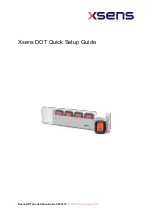
2-32
IM WT310-02EN
CAUTION
The thick lines on the wiring diagrams are the parts where the current flows. Use wires that
are suitable for the current levels.
Note
• Make sure that you have the polarities correct when you make connections. If the polarity is reversed,
the polarity of the measurement current will be reversed, and you will not be able to make correct
measurements. Be especially careful when connecting clamp-type current sensors to the circuit under
measurement, because it is easy to reverse the connection.
• Note that the frequency and phase characteristics of the current sensor affect the measured data.
• To measure the apparent power and power factor more accurately on an unbalanced three-phase circuit,
we recommend that you use the three-voltage, three-current method (3V3A).
Notes about Using Shunt-type Current Sensors and Clamp-on
Probes
Connecting an External Current Sensor Cable
To minimize error when using shunt-type current sensors, follow the guidelines below when
connecting the external current sensor cable.
• Connect the shielded wire of the external current sensor cable to the L side of the shunt output
terminal (OUT).
• Minimize the area of the space between the wires connecting the current sensor to the external
current sensor cable. This reduces the effects of the lines of magnetic force (which are caused
by the measurement current) and the external noise that enter the space.
Shunt-type current sensor
I
±
OUT H
OUT L
Shielded wire
B9284LK
WT300 series
Space between the connection wires
Position on the (Grounded) Circuit under Measurement That You Should Connect
the Shunt-type Current Sensor To
Connect the shunt-type current sensor to the power earth ground as shown in the figure below. If
you have to connect the sensor to the non-earth side, use a wire that is thicker than AWG18 (with
a conductive cross-sectional area of approximately 1 mm
2
) between the sensor and the instrument
to reduce the effects of common mode voltage. Take safety and error reduction into consideration
when constructing external current sensor cables.
LOAD
Shunt-type current sensor
External current sensor
input terminal
V
± Voltage input terminals
WT300 series
2.10 Wiring the Circuit under Measurement When Using Current Sensors
















































